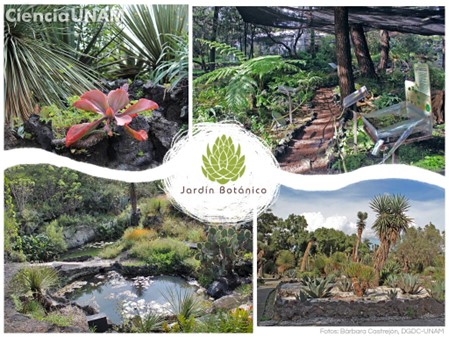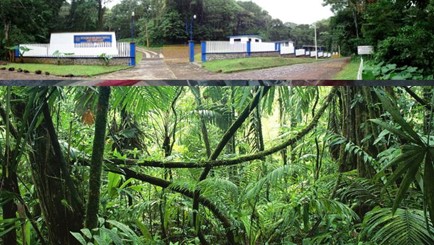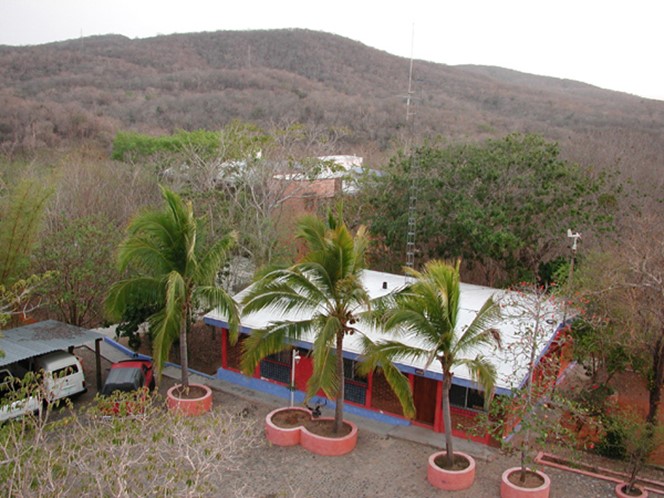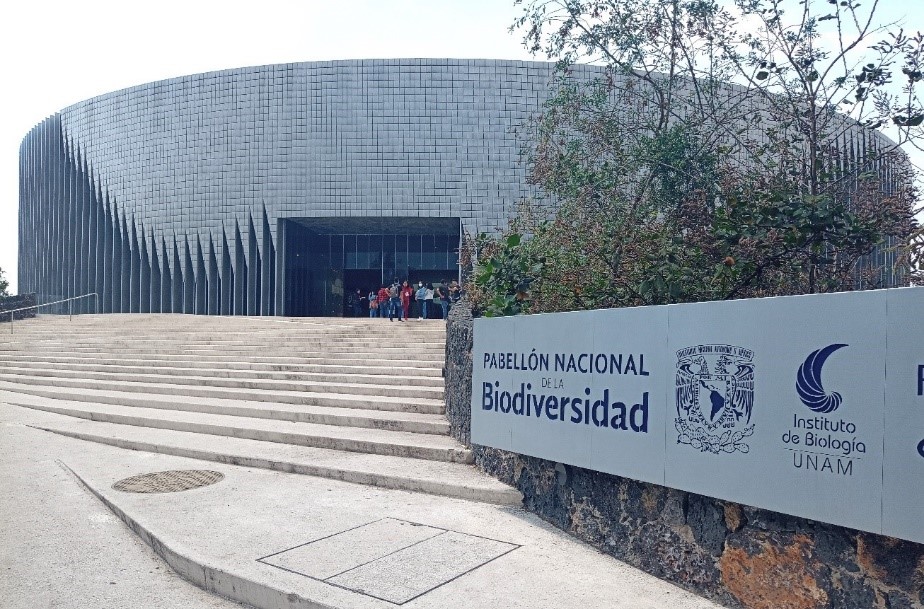Written by Fernando A. Cervantes and Yolanda Hortelano-Moncada, National Mammal Collection, National Biodiversity Pavilion. Institute of Biology, UNAM. Mexico City, Mexico.
The Instituto de Biología (IB) will celebrate its 95th anniversary on November 9, 2024 and is a dependency of the Universidad Nacional Autónoma de México (UNAM) (Fig. 1). This date coincides with the same time that the Mexican government granted “autonomy” to the then National University of Mexico.

The central buildings of the IB are located in the south of Mexico City, in the area known as Pedregal de San Ángel, which is characterized by a rocky substrate of volcanic origin. Currently, a large part of the IB campus is an ecological reserve that protects the flora, fauna, and fungus of the natural ecosystem of the area, which corresponds to xerophytic scrub (Fig. 2).

IB is mainly composed of five academic units: the Department of Zoology, the Department of Botany, the Botanical Garden (Fig. 3) and two field stations, one in the high evergreen forest of the state of Veracruz (Fig. 4) and the other in the low deciduous forest of the state of Jalisco (Fig. 5). The IB also has the Biodiversity Informatics Unit, the National Biodiversity Genomics Laboratory, and the National Biodiversity Microscopy and Photography Laboratory. Other relevant sections of the IB are the Plant Tissue Culture and Biodiversity Laboratory and the recently built National Biodiversity Pavilion (Fig. 6), which houses the national vertebrate collections and the Molecular Biology Laboratory. Over the years, the IB has also formed and guarded important collections such as the bibliographic, historical and iconographic collections.

The primary objective of the IB is the study of biodiversity from the point of view of Systematics and to fulfil this purpose the Institute has several biological collections of animals, plants and fungi. Among vertebrate animals, the collections are of fish, amphibians and reptiles, birds and mammals. Among the collections of invertebrate animals, there are collections of mites, arachnids, crustaceans, helminths, molluscs and insects. Other important collections are those of the National Herbarium, which includes vascular and non-vascular plants and fungi. In addition, the IB has the living plant collections of its Botanical Garden, which represent a relevant genetic resource for Mexico. Most of the taxonomic and geographic information on specimens from a large part of the IB collections is incorporated into electronic databases freely available on the Internet.

However, the most valuable part of the IB during its 95 years of life has been and will continue to be its human component. With a total of 165 academics, including researchers and academic technicians, the IB develops research projects mainly on the origin of biodiversity, its description, classification, diversification and threats of extinction due to the effects of human pressures. At the same time, a group of 626 students associated with the academics carry out their thesis research projects and take undergraduate and graduate courses offered by the IB. In addition, the dissemination of science is a daily task that characterizes the academic work of the IB. For instance, our Institute coordinates and attends guided tours for visitors to the Botanical Garden and the National Biodiversity Pavilion, who come from different levels, from preschool, elementary school, middle school, high school and the public.

Almost a century after its foundation, the productivity of scientific research at the IB has increased considerably, as has the growth and strengthening of its biological collections. Therefore, the knowledge generated in this university unit has become an obligatory source of reference for the knowledge and conservation of biodiversity in Mexico. Therefore, it is a source of satisfaction and pride to contribute to forge the goals of a unique national project in Mexico, like that of UNAM as a whole, which will continue to be to serve the country and humanity, to train professionals useful to society, to organize and carry out research, mainly on national conditions and problems, and to extend the benefits of culture as widely as possible. As in other parts of the world, the road has not been easy, but fortunately today the IB’s expectations for continuing to meet its objectives are promising and flattering.



Pingback: NatSCA Digital Digest – April 2024 | NatSCA